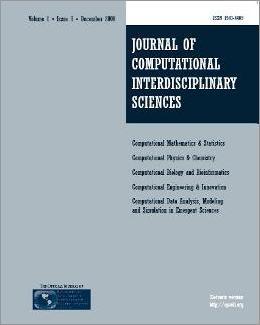
Editorial Office:
Management:
R. S. Oyarzabal
Technical Support:
D. H. Diaz
M. A. Gomez
W. Abrahão
G. Oliveira
Publisher by Knobook Pub


Editorial Office:
Management:
R. S. Oyarzabal
Technical Support:
D. H. Diaz
M. A. Gomez
W. Abrahão
G. Oliveira
Publisher by Knobook Pub
doi: 10.6062/jcis.2011.02.01.0027(Free PDF)
Javier Delgado, João Gazolla, Esteban Clua and S. Masoud Sadjadi
This paper proposes and describes a methodology developed to port complex scientific applications originally written in FORTRAN to nVidia CUDA. The significance of this lies in the fact that, despite the performance improvement and programmer-friendliness provided by CUDA, it presently lacks support for FORTRAN. The methodology described in this paper addresses this problem using a multiple step process that includes identification of software modules that benefit from being ported, familiarization with the code, porting, optimizing, and verifying the ported code. It was developed and carried out by porting an existing module of a weather forecasting application written in FORTRAN. Using this approach, we obtained a functional prototype of the ported module in approximately 3 months, despite our lack of knowledge of the theory of the weather code. Considering the relevance of this application to other scientific applications also written in FORTRAN, we believe that the proposed porting methodology described can be successfully utilized in several other existing scientific applications.
GPU, programming, CUDA, weather modeling.
[1] CATLETT et al. 2007. TeraGrid: Analysis of Organization, System Architecture, and Middleware Enabling New Types of Applications, HPC and Grids in Action, Ed. Lucio Grandinetti, IOS Press "Advances in Parallel Computing" series.
[2] GRELL GA, DUDHIA J & SAUFFER DR. 1994. Description of the fifth generation Penn State/NCAR Mesoscale Model (MM5). NCAR Tech. Rep., TN-3981STR: 121.
[3] HILLESLAND KE & LASTRA A. 2004. GPU floating-point paranoia. GP2 ACM Workshop on General Purpose Computing on Graphics Processors: 8.
[4] HONG SY, DUDHIA J & CHEN SH. 2004. A revised approach to ice microphysical processes for the bulk parameterization of cloud and precipitation. Mon. Weather Rev., 132: 103-120.
[5] IACONO MJ, MLAWER EJ, CLOUGH SA & MORCRETTE JJ. 2000. Impact of an improved longwave radiation model, RRTM, on the energy budget and thermodynamic properties of the NCAR Community Climate Model. J. Geophys. Res., 105: 14,873-14,890.
[6] MICHALAKES J, DUDHIA J, GILL D, HENDERSON T, KLEMP J, SKAMAROCK WC & WANG W. 2004. The Weather Reseach and Forecast Model: Software Architecture and Performance. In: Proc. 11th ECMWF Workshop on the Use of High Performance Computing In Meteorology: 25-29.
[7] MICHALAKES J & VACHHARAJANI M. 2008. GPU Acceleration of Numerical Weather Prediction. Parallel Processing Letters 18,4: 531-548.
[8] RYOO S, RODRIGUES C, STONE S, BAGHSORKHI S, UENG S, STRATTON J & HWU W. 2008. Optimization space pruning for a multithreaded GPU. International Symposium on Code Generation and Optimization.
[9] SKAMAROCK WC, KLEMP JB, DUDHIA J, GILL DO, BARKER DM, WANG W & POWERS JG. 2005. A Description of the Advanced Research WRF Version 2. NCAR/TN- 468+STR.